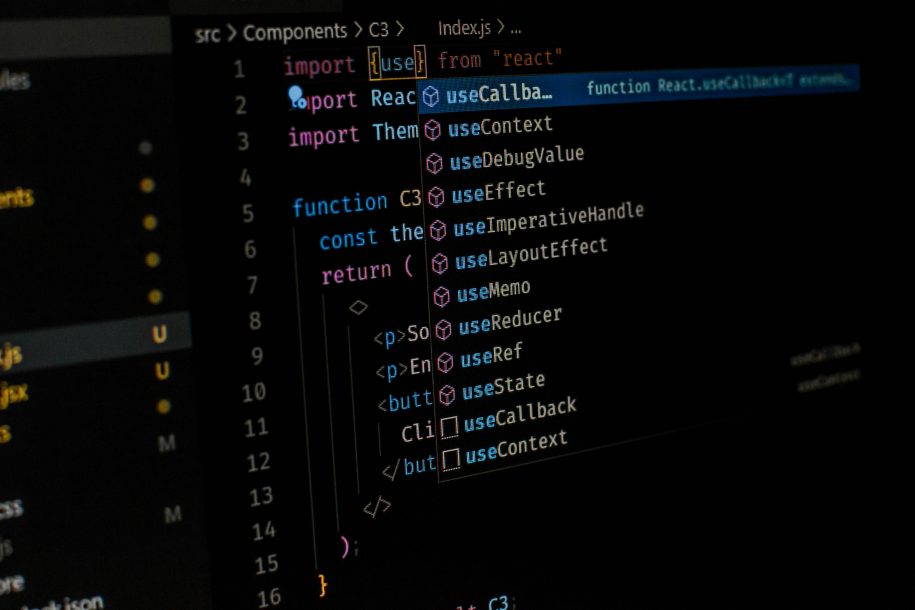Introduction
In the world of programming, code optimization is a crucial aspect of software development. Consequently, one of the key techniques used to achieve this is refactoring. Refactoring, the process of restructuring existing code without changing its external behavior, plays a pivotal role. It involves making improvements to the codebase, thereby enhancing its readability, maintainability, and performance. In this article, we will explore the meaning of refactoring in programming and delve deep into its importance, benefits, techniques, best practices, and tools for effective code optimization.
Refactor Meaning in Programming
Refactoring, in the context of programming, refers to the act of improving the internal structure of code without altering its functionality. It involves making changes to the codebase to enhance its quality, readability, and maintainability. The primary goal of refactoring is to make the code easier to understand, modify, and extend. By refactoring code, developers can eliminate code smells, reduce technical debt, and improve the overall efficiency of the software.
What Does Refactoring Code Mean?
The refactor meaning in code refers to making changes to the existing codebase to improve its design, structure, and performance. This process involves a series of small, incremental modifications that collectively enhance the code’s quality. Importantly, refactoring code isn’t about adding new features or fixing bugs; rather, it focuses solely on improving the code’s internal structure. Consequently, this process ensures that the code remains clean, robust, and maintainable throughout its lifecycle.
What is Rewrite vs Refactor?
While refactoring and rewriting may seem similar, they have distinct differences. Rewriting code involves starting from scratch and creating a new codebase to replace the existing one. It is a time-consuming and risky process, as it requires understanding and replicating the existing features and functionality. On the other hand, refactoring involves modifying
the existing codebase to improve its quality without changing its external behavior. Refactoring is generally preferred over rewriting, as it helps preserve the existing knowledge and investment in the code while making incremental improvements.
What is the Difference Between Refactor and Restructure?
Refactoring and restructuring are often used interchangeably, but they have different meanings in the context of code optimization. Refactoring refers to the process of improving the internal structure of code without changing its external behavior. It focuses on enhancing readability, maintainability, and performance. On the other hand, restructuring involves rearranging the components of the codebase to improve its organization and architecture. Restructuring may include changes such as moving files, renaming classes, or reorganizing modules. While both refactoring and restructuring aim to improve the codebase, they focus on different aspects of code optimization.
The Importance of Refactoring in Code Optimization
Refactoring plays a vital role in code optimization by improving the quality and performance of software. Consequently, here are some key reasons why refactoring is important:
- Enhanced Readability: First and foremost, refactoring code improves its readability by eliminating code smells and making it easier to understand. This clean and well-structured code enhances collaboration among developers and reduces the time required for maintenance.
- Reduced Technical Debt: Furthermore, technical debt, which refers to the additional work required in the future due to poor code quality, can be reduced by refactoring regularly. This ensures that the codebase remains clean and maintainable, mitigating future complications.
- Improved Performance: Moreover, refactoring code can lead to improved performance by eliminating inefficiencies, reducing redundant code, and optimizing algorithms. This process allows developers to identify and fix performance bottlenecks, resulting in faster and more efficient software.
- Facilitates Extensibility: Lastly, well-refactored code is easier to extend and modify. By refactoring, developers can create a flexible and modular codebase that can accommodate future changes and additions without introducing bugs or breaking existing functionality.

Benefits of Refactoring
Refactoring offers several benefits for both developers and software projects. Additionally, it’s essential to highlight some key advantages of refactoring. Firstly, it enhances the quality of code by eliminating code smells, improving readability, and reducing complexity. Consequently, this leads to cleaner, more maintainable code that is easier to work with. Secondly, refactoring helps prevent bugs by addressing potential issues before they become problems. By improving the code’s structure and design, developers can identify and fix potential sources of bugs, reducing the likelihood of errors.
Moreover, refactored code contributes to increased developer productivity. It becomes easier to understand and modify, leading to enhanced efficiency. Consequently, developers spend less time deciphering complex code or dealing with technical debt, allowing them to focus on implementing new features or fixing critical issues. Lastly, regular refactoring reduces technical debt, which results in long-term cost savings. By investing in code optimization, organizations can avoid expensive rewrites or extensive debugging efforts that may arise from poor code quality.
When to Refactor Your Code
Knowing when to refactor your code is essential for effective code optimization. Here are some indicators that suggest it’s time to refactor:
1. Code Smells: Code smells are specific patterns or structures in the code that indicate potential issues. If you notice code smells like duplicated code, long methods, or excessive dependencies, it’s a good time to refactor.
2. Difficulty in Understanding or Maintaining Code: If the codebase becomes challenging to understand or maintain, it’s a clear sign that refactoring is needed. Complex code, unclear naming conventions, or tangled dependencies can make it harder for developers to work with the code.
3. Performance Bottlenecks: If you identify performance bottlenecks or areas where the code is inefficient, refactoring can help optimize the code and improve overall performance.
4. Adding New Features Becomes Difficult: When adding new features becomes a cumbersome task due to the existing code’s limitations, refactoring can make the codebase more extensible and adaptable.
Common Code Smells and How to Identify Them
Code smells are specific patterns or structures in the code that indicate potential issues or areas for improvement. Here are some common code smells and how to identify them:
- Duplicated Code: Duplicated code occurs when the same or very similar code appears in multiple places. To identify duplicated code, look for sections that have the same or similar logic and functionality.
- Long Methods: Long methods are functions or procedures that contain excessive lines of code. To identify long methods, look for functions that span multiple pages or contain a large number of statements.
- Large Classes: Large classes occur when a class has too many responsibilities or contains excessive methods and properties. To identify large classes, look for classes with a high number of methods or extensive functionality.
- Primitive Obsession: Primitive obsession occurs when primitive data types are used inappropriately instead of creating custom objects or using built-in abstractions. To identify primitive obsession, look for instances where primitive types are used excessively or in complex ways.
Techniques for Refactoring Code
Refactoring code involves a variety of techniques that developers can employ to improve its quality and performance. Furthermore, some commonly used techniques for refactoring code include Extract Method, which involves extracting a section of code into a separate method to improve readability and eliminate duplicated code. Additionally, the Rename technique involves renaming variables, methods, or classes to make the code more expressive and self-documenting, enhancing its readability. Furthermore, replacing magic numbers (hard-coded values) with constants improves code maintainability and readability. Lastly, simplifying conditional statements by using logical operators, combining conditions, or extracting complex conditions into separate methods can enhance code readability.
Best Practices
To ensure effective refactoring, developers should follow best practices that promote code quality and maintainability. Here are some best practices for effective refactoring:
1. Start with a Solid Test Suite: Before refactoring, ensure that the codebase has comprehensive test coverage. A solid test suite helps verify that the code changes do not introduce bugs or alter the existing behavior.
2. Refactor in Small, Incremental Steps: Refactor code in small, manageable steps rather than attempting large scale changes. This approach minimizes the risk of introducing bugs and allows for easier rollback if needed.
3. Use Version Control: Utilize version control systems like Git to track and manage code changes during the refactoring process. Version control helps maintain a history of modifications and provides a safety net for reverting changes if necessary.
4. Collaborate and Communicate: Refactoring should not be done in isolation. Collaborate with other developers, communicate the changes being made, and gather feedback to ensure the refactoring aligns with project goals and objectives.
Tools and Resources for Code Refactoring
Several tools and resources are available to assist developers in code refactoring. Here are some popular ones:
- IDEs (Integrated Development Environments): IDEs like IntelliJ IDEA, Visual Studio, and Eclipse provide built in refactoring tools that assist developers in code optimization.
- Linters: Linters such as ESLint (for JavaScript) and RuboCop (for Ruby) analyze code for potential issues and suggest refactoring improvements.
- Static Code Analysis Tools: Tools like SonarQube and CodeClimate perform static code analysis to identify code smells and provide suggestions for refactoring.
- Online Communities and Forums: Online communities and forums like Stack Overflow and Reddit are invaluable resources for developers seeking advice, tips, and best practices related to code refactoring.
What is Refactoring in Agile?
In Agile software development, the refactor meaning is an integral part of the development process. It allows developers to continuously improve the codebase while delivering incremental value to the customer. In Agile, refactoring is performed iteratively and often, ensuring that the code remains clean, adaptable, and maintainable throughout the project.
Conclusion
In conclusion, learing the refactor meaning as a powerful technique for code optimization in software development. It enhances code quality, improves performance, and reduces technical debt. By following best practices, using appropriate tools, and being aware of common code smells, developers can leverage the power of refactoring to create cleaner, more maintainable code. Embrace the art of refactoring, and unlock the secrets of code optimization to build robust and efficient software.
Now that you understand the refactor meaning in code optimization, it’s time to put your knowledge into practice. Start by identifying areas in your codebase that could benefit from refactoring and apply the techniques and best practices discussed in this article. You can read our article about Bit Rot and remember, refactoring is an ongoing process that requires dedication and collaboration. Happy refactoring!
IT METRICS TO BECOME AN EXPERT















Leave a Reply